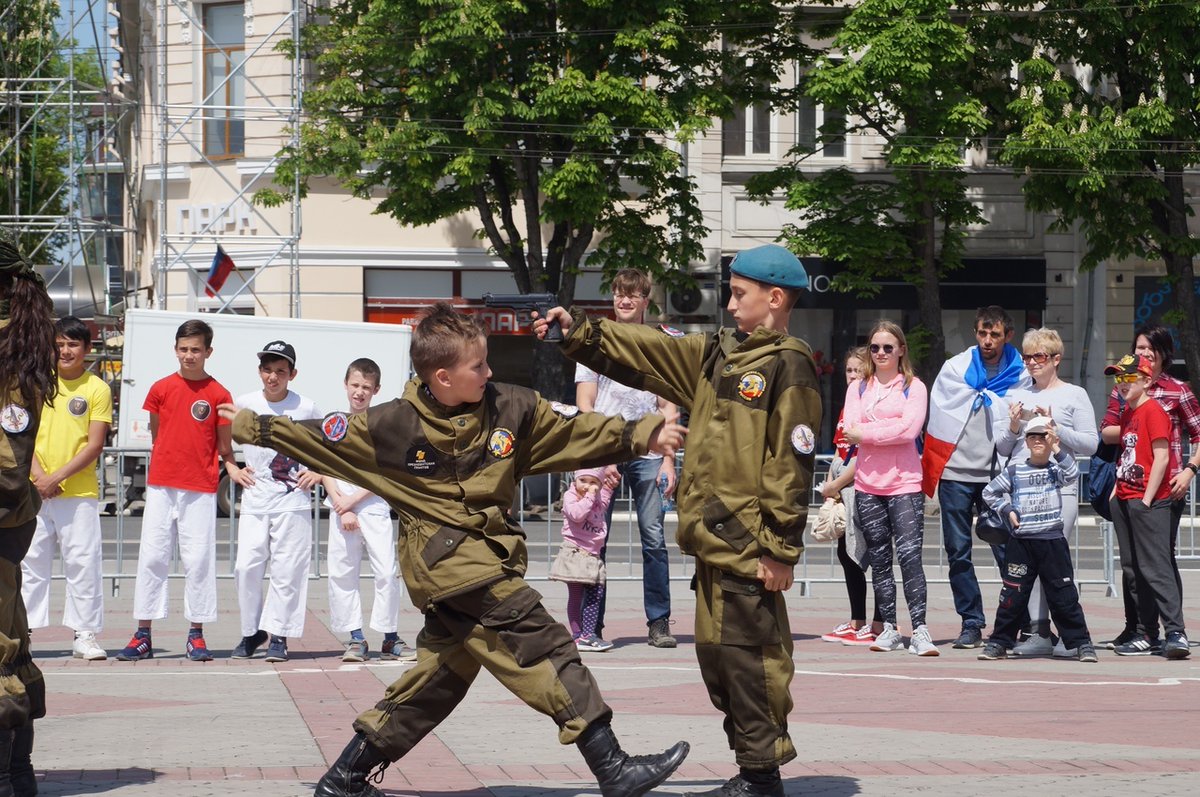All but one Crimean town had to switch to water rationing after September 2020, receiving water only for six hours per day. However, it seems there is no way out: the ongoing extensive use of lakes and springs may only worsen the situation in the long term and has already caused a severe drought.
The Crimean authorities recognize the problem but do not admit there is no solution except for deoccupation. They try super-expensive ideas to soften the impact, such as causing rain artificially, desalinating seawater, or uniting all Crimean water reservoirs into a single system. However, there has thus far been little success.
- Read also: Ukraine’s water blockade of Crimea should stay, because it’s working
- Is Crimea now costing Russia more than it is worth?

Water schedule and dried-out reservoirs
Overall, due to the critical water situation, since 24 August 2020 restrictions on the water supply have been introduced in the city of Simferopol and 39 other settlements located in the Simferopol and Bahchysarai districts. Fresh water is supplied to households and local businesses by schedule, typically for three hours in the morning and another three hours in the evening. Yet even this schedule is often interrupted, local residents have reported on social media. Recently, similar restrictions on water supply were introduced in Yalta and Yevpatoria.
Sevastopol is the last city to be fully supplied with water. It is the military center of the Russian Black Sea Fleet and was always the most Russified city on the peninsula. Sevastopol also was termed a “hero-city” due to its legendary World War II battles between the Soviet and German armies. However, this city is also close to water rationing since water in Chornorichynske reservoir near Sevastopol will last until the end of the year, as occupation authorities have admitted.

Also, 29 villages in northern Crimea have become completely dry due to empty wells. Currently they are being supplied with water from cisterns delivered by cars.
Businesspeople in Yalta write that they will not be able to properly provide services, especially those which require water, such as cafes and hairdressers if the water supply is limited only to mornings and evenings. Yet there are few alternatives — providing water in daytime means the majority of people won’t receive it at home. In other cities, such as Simferopol and Yevpatoria, where water rationing started a few months earlier, people have already adjusted to the new situation by storing water in the morning for the whole day.
That authorities in Crimea are preparing for the worst scenario is demonstrated by the order of the Head of the occupied Crimea Sergei Aksenov for all Crimean districts to develop “traffic light” schedules for water supply in case of a further decrease of water level in reservoirs. According to him, this is necessary so that the authorities can quickly respond to changes:
“To make it clear: if the volume of remaining water in the reservoir is 2 million cubic meters — such and such consequences, if 1 million cubic meters — such and such consequences,” Aksenov said.
Yet experience proves it is hard to supply water properly even during those few scheduled hours. In some cases, water is supplied for one instead of three hours, Crimean residents write on social networks. And most importantly, the quality of water is poor.

Due to old rusty pipelines, the constant waves in the water supply mean that each new wave of water brings to the houses new portions of rust from the pipes. During pauses in water supply, the pipes degrade yet faster. Examples of dirty water flowing from the taps in Crimea were posted by many Crimean residents. One of the most popular was probably the post by popular Crimean blogger Roksolana Today about “cappuccino” coming from the tap.
“Simferopol. I remind you what we often use to wash our hands! That’s the water which was almost constantly running on Pervomayskaya Street last week,” wrote the blogger.
Some netizens compared the water to cappuccino, commenting ironically how happy Crimean residents are to have cappuccino coming out of their taps.
Of course, in the majority of cases water quality is not as bad as in this radical example but still poor. Also, due to old pipelines, a large part of water is simply lost during the pumping.
Crimean authorities start using water from waterfalls and lakes in the mountains but this may turn to environmental disaster
The Crimean occupational authorities have started sourcing water from waterfalls and springs in the mountains to supply additional water to reservoirs. In particular, the acting head of the Russian occupational administration of Yalta Yanina Pavlenko named Massandra waterfall and Mogabi lake as new sources of water.
However, this may have disastrous ecological side effects, leading to yet further and stronger drought in the peninsula since some of the springs and lakes are important sources of water for rivers as well as important objects of local ecosystems.

Needless to say, some of the most beautiful Crimean places which have been attracting tourists will be lost if lakes disappear or are degraded. In particular, according to the announced plan the water will be pumped from the Mogabi Lakes to fill Zahorske reservoir, which supplies the city of Yalta and has dropped to a critical point.
As Crimean occupational authorities have announced, according to the First Sevastopol TV Channel new infrastructure was built to pump water from Nikkerman pit, Kadykivskyi pit and a lake on the Hosforta mountain as well.

The critical state of the Crimean ecosystem is well demonstrated by the fact that many of the local biggest rivers have dried up or are seriously depleted.

Yet another warning of impending environmental disaster are dry karst caves. Almost all major springs that fed the Crimean rivers were located in caves in the Crimean mountains. There were about 3,000 springs on the peninsula, the largest coming to the surface in these caves. Crimean mountains consist mainly of karst rocks, where condensation and precipitation collect.
Overall, the water surface area fell by 32% between 2015 and 2020 in the Crimean lakes and water reservoirs. Some reservoirs, such as Simferopol or Chornorichyn reservoirs, lost more than 90% of their surface area, as was determined by a remote monitoring of water surface area based on satellite images.

The chairman of the Crimean Tatar Resource Center Eskender Bariev explained that the growing military presence on the peninsula and an additional 700,000 residents who migrated to the peninsula from Russia have placed additional demands on the critically reduced water supply. Mismanagement and neglectance of environmental sustainability are the main causes of the problem:
“Due to the irrational approach of the occupying powers to natural water sources, there can be a catastrophe… During the last summer 3.5 million vacationers came, and what did they do? They used Crimean water. If the occupation authorities indeed wanted to take preventive measures, they would not facilitate the arrival of Russians, who in principle are occupiers… Now the population has increased by at least 700,000 people… The occupiers have not renewed the pipes during the last six years of occupation. At the same time, the loss of drinking water is up to 60%, especially in Kerch. All these complex problems lead to water shortages.”
Desalinate sea and induce rain by aerial cloud seeding, propose the occupiers
Meanwhile, the occupational authorities continue to come up with fantastic plans to provide water to the inhabitants of the peninsula: connect all the reservoirs of Crimea into one system, use all karst springs, desalinate sea water, or stimulate precipitation artificially. Not only do the ideas have environmental side effects and cannot solve the problem in the long run, they are also very expensive and unrealistic.
The option to desalinate sea water has been under consideration for several years. One water desalination plant was indeed built on the seashore in the village of Mykolayivka, expected to provide 40 thousand cubic meters of water per day but not yet launched for full capacity. The project cost Crimean authorities $100 million and is also very expensive to maintain. Eskender Bariev warned about possible ecological problems after the usage of desalinators to receive drinking water from sea:
“The Russians say they will install desalinators. They actually installed them in Armiansk. But they are environmentally dangerous, the brine that is formed from their work is discharged into Syvash lagoons [in the Azov sea].”

The option to increase the amount of precipitation through active influences on atmospheric processes is also very expensive and failed during the first experiment.
In September 2020, aviation “sowed” special substances in clouds to stimulate precipitation and increase the inflow of water in the Simferopol Reservoir. This one experiment cost at least $305,000.
To influence atmospheric processes it is common to use two most widespread types of reagents. These are either refrigerants (substances which cause sharp local decrease in temperature, for example, liquid nitrogen); or ice-forming reagents that perform the function of artificial crystallization centres.
The experiment did indeed cause above-average rainfall over Simferopol. In particular, the city of Simferopol was inundated by a downpour on 30 September 2020, which led to flooding. At the same time, the goal to increase the water level in the Simferopol reservoir was not reached. It is difficult to achieve a downpour exactly over the reservoir so it receives additional water. The rain over the city has little impact on the situation since this water cannot be properly collected or used. At most, it contributed partially to the increase of groundwater and irrigation.
Read also:
- Could Ukraine have fought off Crimean occupation? A crucial document you should know
- Russia’s replacement of population in occupied Crimea violates Geneva Convention – UN report
- Russia can’t solve Crimea’s water problem
- The risk of water shortage and implications for Ukraine’s security
- Donbas without water: The ecology of the east Ukrainian frontline
- Documentary “Crimea. As it Was” shows the very beginning of Russia’s occupation of the peninsula
- FSB tortures detainees in occupied Crimea as law enforcement goes Soviet-style, UN report confirms
- 76 years after deportation, Crimean Tatars are again being erased from history in Crimea
- Crimean history. What you always wanted to know, but were afraid to ask










